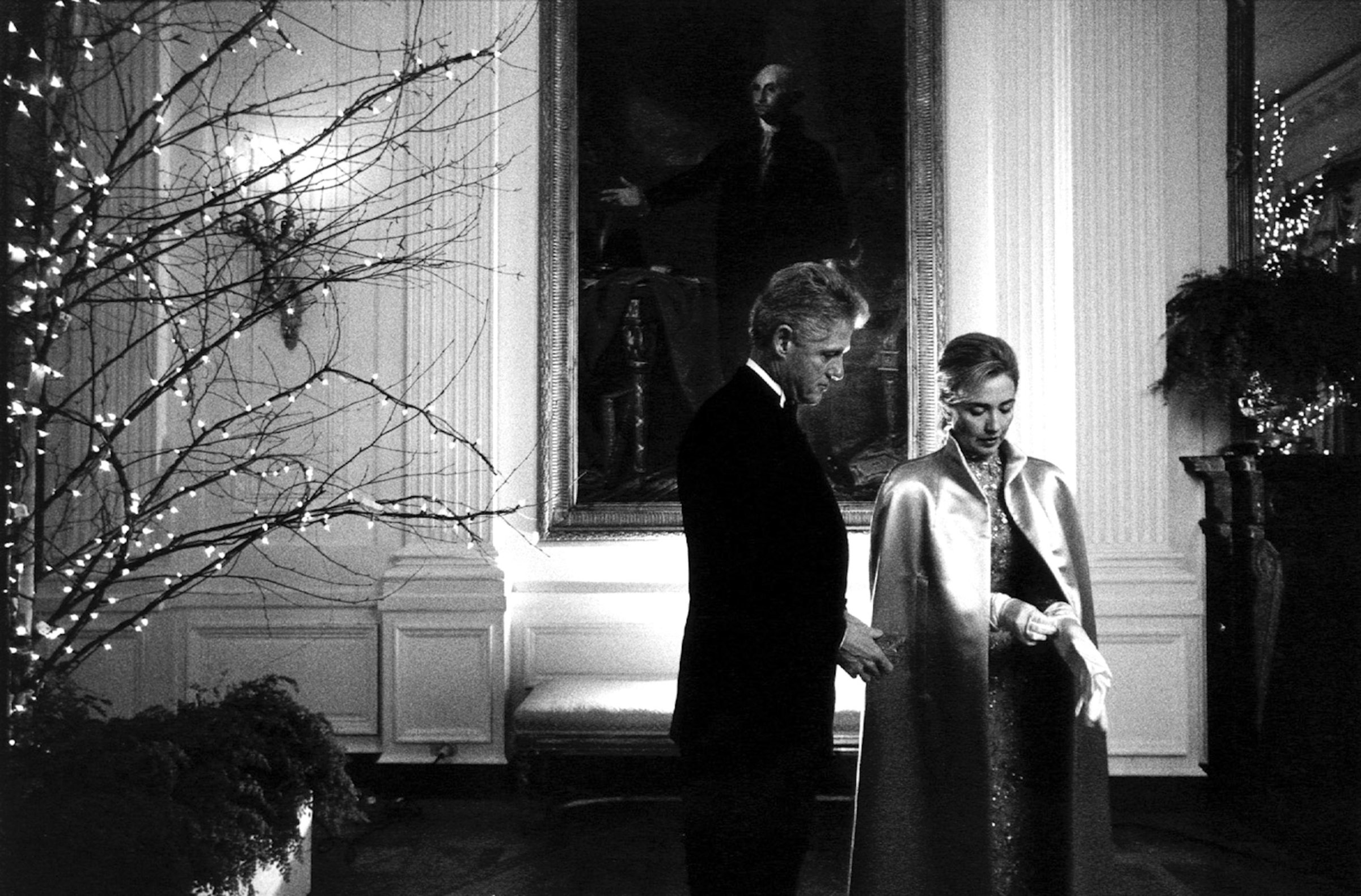
It’s Sept. 28, 1995, and Israeli Prime Minister Yitzhak Rabin and Palestinian leader Yasser Arafat are getting ready to make history by signing the Oslo II Accord expanding Palestinian self-rule in the West Bank. Flanked by Egyptian President Hosni Mubarak, King Hussein of Jordan and U.S. President Bill Clinton, they wait in a hallway at the White House. One photographer, Barbara Kinney, is here to witness the scene. As four of the men adjust, in concert, their ties, she presses her shutter, capturing the incongruous behind-the-scenes ritual that will earn her, a few months later, a World Press Photo prize, one of the most prestigious photojournalism awards.
For the past 20 years, Kinney, an Indiana-born photographer who’s worked for USA Today, Reuters and the Seattle Times, has been following the Clintons — from Bill’s years in the White House, to Hillary’s 2008 presidential campaign, to Chelsea’s wedding. Along the way, she has gained unprecedented access to the leading family in Democratic politics.
Now, as Hillary Clinton embarks on her second presidential run — one that could make history — Kinney is back on the campaign trail as the candidate’s official photographer.
Earlier this month, Kinney joined Clinton in Iowa and New Hampshire, where the candidate has been holding low-key events with small groups of voters. But when the campaign will be in full swing, the two will travel together at all times — from the first to the last event, Kinney tells TIME.
Kinney’s goal is twofold: she’s there to provide the campaign with the necessary photos to feed the various social-media channels that have come to play an important role in politics, and also to capture the off-the-cuff moments that could take on historical value in the coming months and years.
“[I want] to make great pictures that define the campaign and define Hillary,” she says. “Yes, I will have to do the pictures that the campaign will need, which, obviously, makes her look good and engaged. But I’m also looking to shoot those great documentary pictures that, to me, define a campaign even more.”
The key is access, and Kinney has it. And she’s built over two decades as a photographer.
When she was 13 years old, Kinney wanted to be an artist, but she readily admits that she lacked the skill to draw or paint. So she turned to a different medium. “I think photography became my creative outlet,” she says.
Kinney attended a couple of photography classes in high school before joining the student newspaper and yearbook. One day, her father sent to meet the editor of her hometown newspaper in Evansville, Ind. “I wanted to know what colleges would be good to study photojournalism,” she says. “He recommended Kansas, Missouri and Indiana, and I ended up at the University of Kansas.”
When she graduated with a degree in photojournalism and news writing, Kinney moved to Washington, D.C., thinking she would easily find a job. She was wrong. “I ended up working for a trade association for a couple of years,” she says. “[Until] a friend told me to apply to this new newspaper: USA Today.”
Kinney became a photography assistant, which allowed her to take pictures on a part-time basis for the paper. “I became known as the marathon photographer because I had shot one great image at the New York marathon once,” she says. She went to cover the Boston marathon five times.
After six years, she quit to become a freelance photographer. Then, in early 1992, she received a call from President Clinton’s new Administration. “They were staffing for his Inauguration,” Kinney says. “And a friend of mine, who had worked on the campaign, gave my name to the First Lady’s press secretary, Lisa Caputo.”
Kinney photographed the Inauguration and was quickly hired on a 30-day tryout period as one of the White House’s four staff photographers. Bob McNeely was head photographer — a position held by Pete Souza in President Barack Obama’s Administration — with three staff photographers working with him, including Kinney. In addition, “the Vice President had two photographers, and then we had a photo-editing staff,” she recalls. “Each day, we would alternate between working with the President and the First Lady.”
While most White House staff photographers live in the shadows, Kinney’s name made its mark in 1995 when she won the World Press Photo prize in the People in the News category for her Oslo II Accord image. Kinney spent six years in the White House before joining Reuters as an entertainment picture editor and then moving to Seattle where she worked for the Seattle Times, the Bill & Melinda Gates Foundation and Digital Railroad, a web hosting service for photographers.
In 2007, when Hillary Clinton announced her candidacy for President, Kinney reconnected with her former colleagues. “I lobbied [for them] to bring me on as a photographer,” she says. “I just kept on calling and sending emails telling them that this was historical and it needed to be documented.”
Clinton’s staff finally got back to her in early 2008, inviting her to Iowa to cover the caucus — one their candidate would lose to Obama. “I was really depressed about that,” she tells TIME. “Plus, when I came back I learned that I had been laid off from Digital Railroad, [which went bust].”
Suddenly unemployed, Kinney called Clinton’s staff again, offering her services on a full-time basis. “When they came to Seattle in February of that year, I got on the plane and worked through June,” she says, recalling the unexpectedly long primary campaign of that year.
“It was hard,” she says. “I didn’t know whether we were going to win or not; I was just focusing on making the pictures. You go out in this campaign where, obviously, the people who show up are your supporters, and so there’s just so much emotion and excitement. We’d work all day, we’d do three events and we’d have one left in the evening. And you just want to be done and back in your hotel room. And then, you go into this auditorium full of people screaming and you’re just pumped up again. You’re energized again.”
And then, in the end, all those months of excitement translated into one last night of a different kind of energy, when Clinton made her concession speech after months of a razor-edge battle that Obama won. “That last event was very emotional,” she says. “I remember shooting pictures in tears, trying to focus.”
Now Kinney’s second stint as Clinton’s official campaign photographer promises to be, in some ways, even more trying. “Photography is so much more an important aspect of the ongoing campaign [than it used to be],” she explains. “It’s not an afterthought this time around because of social media. Today, they have all of these outlets — from Facebook to Twitter and Instagram. And the speed has definitely increased.”
In 2008 Kinney was able to file her images at the end of each day; this year, she’s sending her edit after each event, “just like a wire photographer would,” she says. And the response to Kinney’s work has also changed dramatically. “The reach has [expanded],” she says. “I got a little overwhelmed by the number of responses I got from people. I went to bed one night and I had to turn my phone off because I kept getting beeps for people adding me on their Twitter accounts. There’s so much attention.”
High expectations come with the job; “There are a lot of great photographers out there, from David Burnett and Stephen Crowley to Doug Mills, so there may be a higher standard that people are expecting,” she tells TIME. To meet those expectations, Kinney is banking on the access she’s secured over her years with the Clintons. “I’ve been around her enough that she’s comfortable having me there,” she says. “I’ve learned, over the years, when to go and when to leave. That’s how you get those great behind-the-scenes real moments, the unguarded moments that make for great photojournalism.”
And for great stories. Kinney says that a few years after she took that famous picture of the Oslo II Accord signees, King Hussein and Queen Noor of Jordan visited the White House. She learned from the Queen that the photo held a place of honor at the royal residence in Amman. As she was about to photograph the Royal couple with Bill and Hillary, Kinney recalls, “I said, ‘Mr. President, you need to straighten your tie a little bit. And he said, ‘Oh, Barbara, don’t you start again.’”
Barbara Kinney is a photographer based in Seattle.
Marisa Schwartz Taylor, who edited this photo essay, is an Associate Photo Editor at TIME.com. Follow her on Instagram and Twitter.
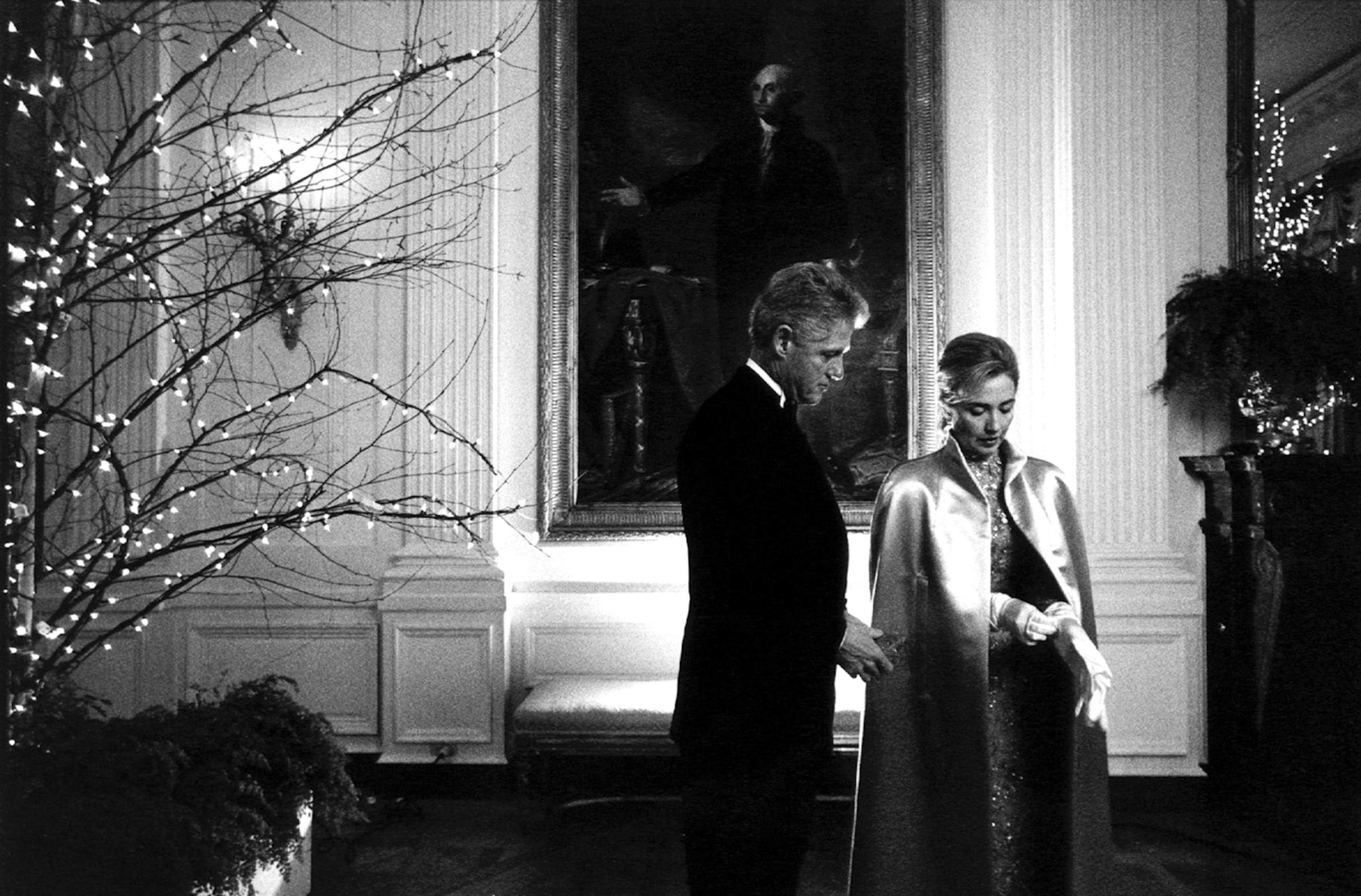
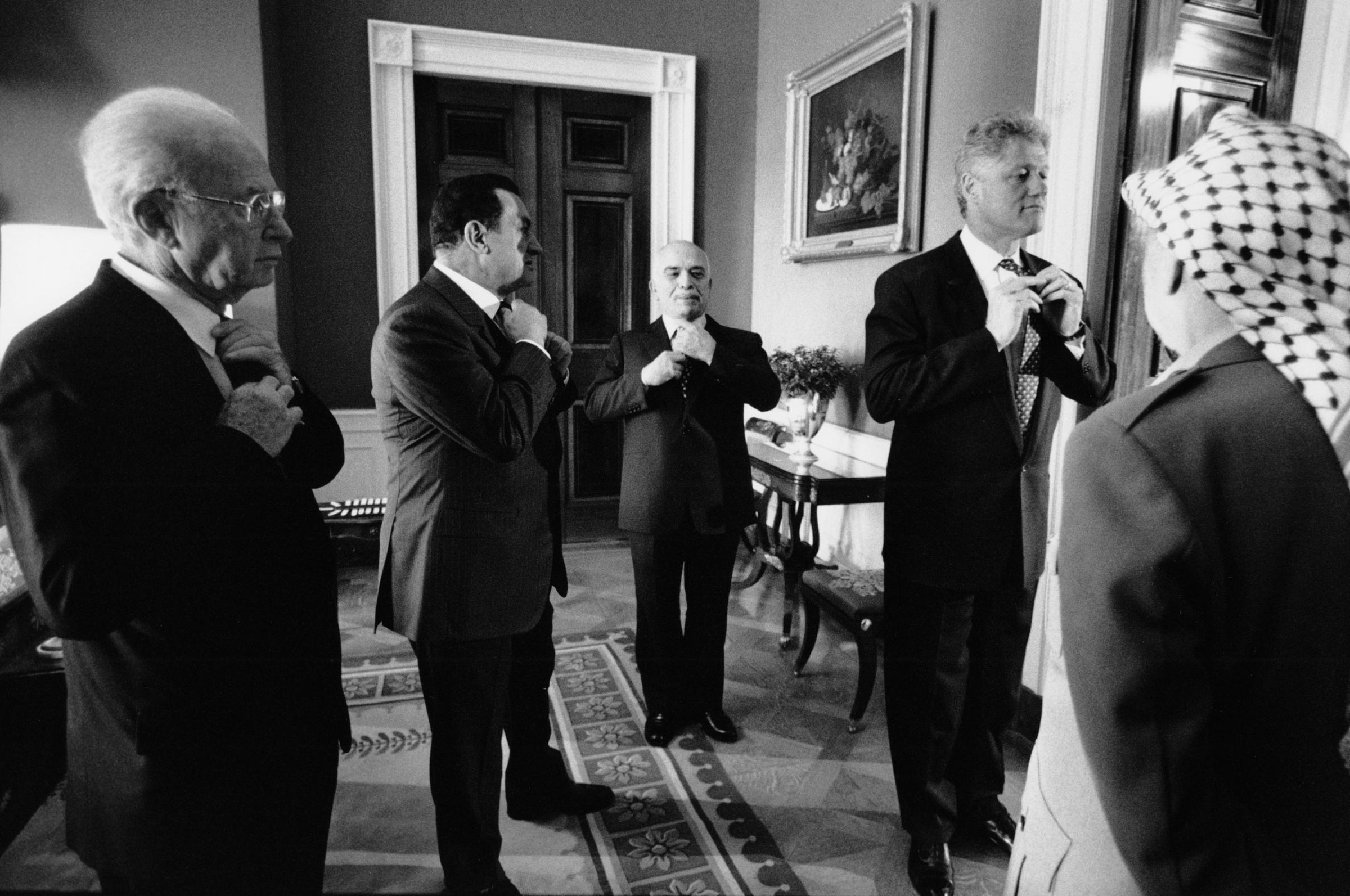

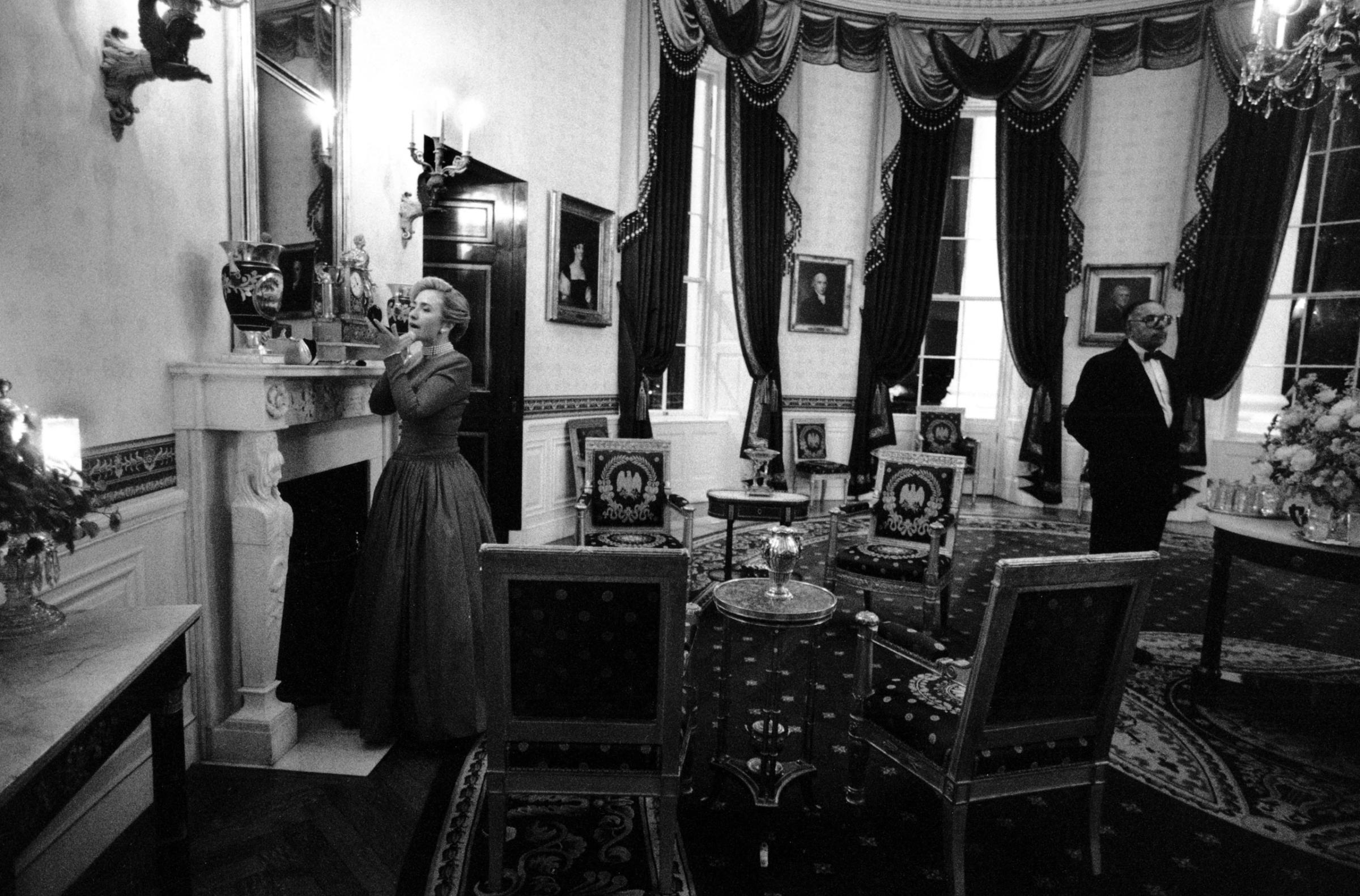
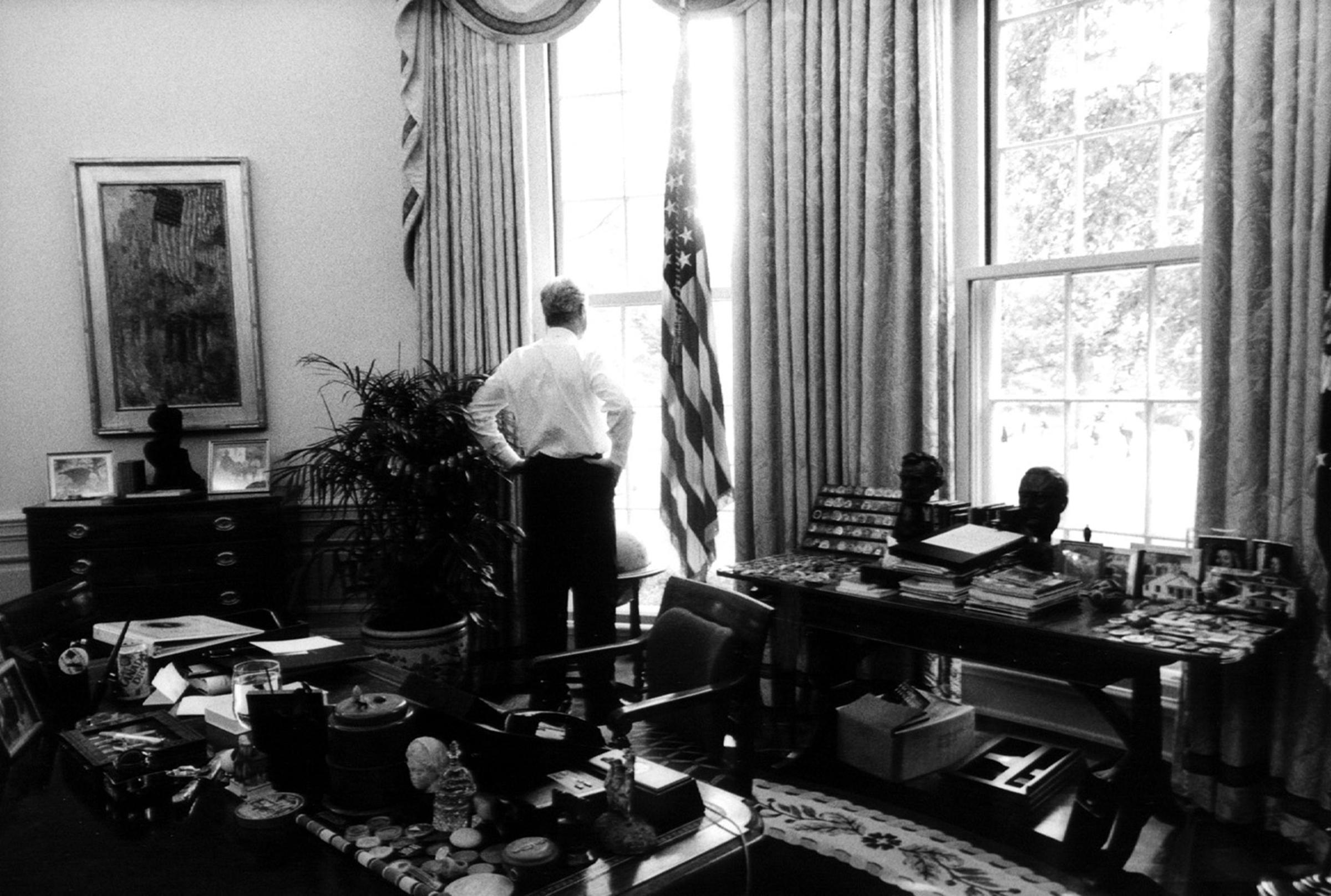
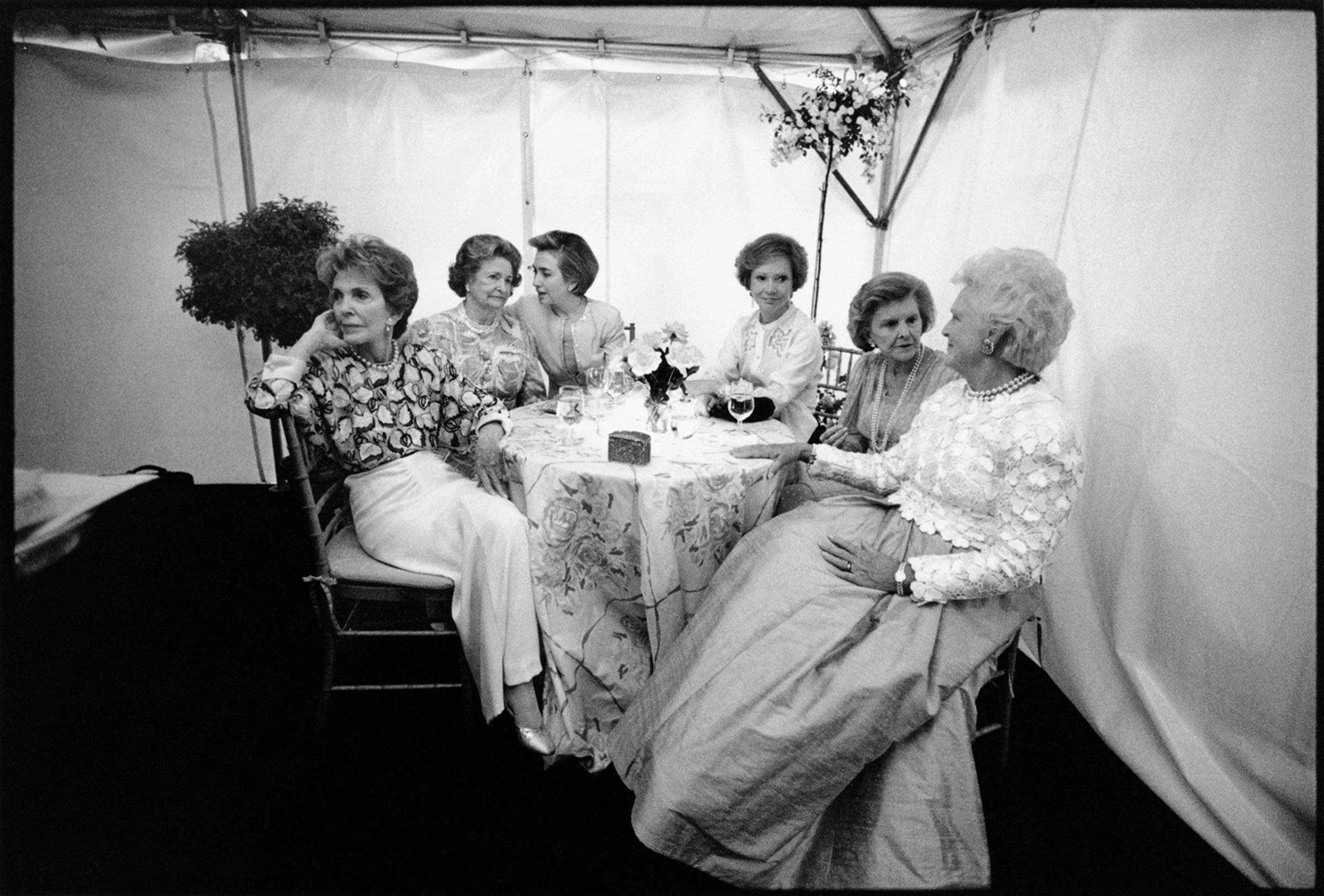
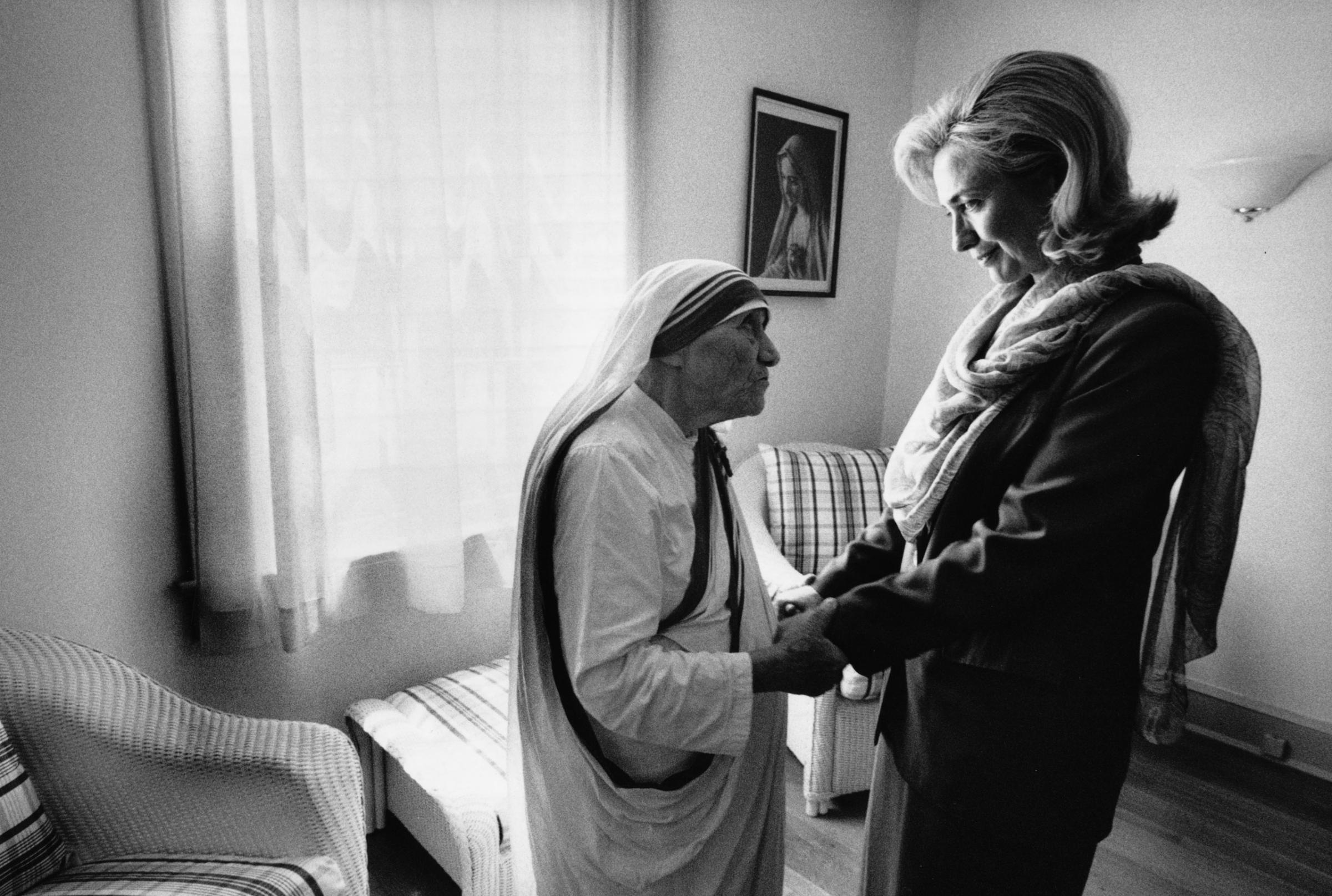
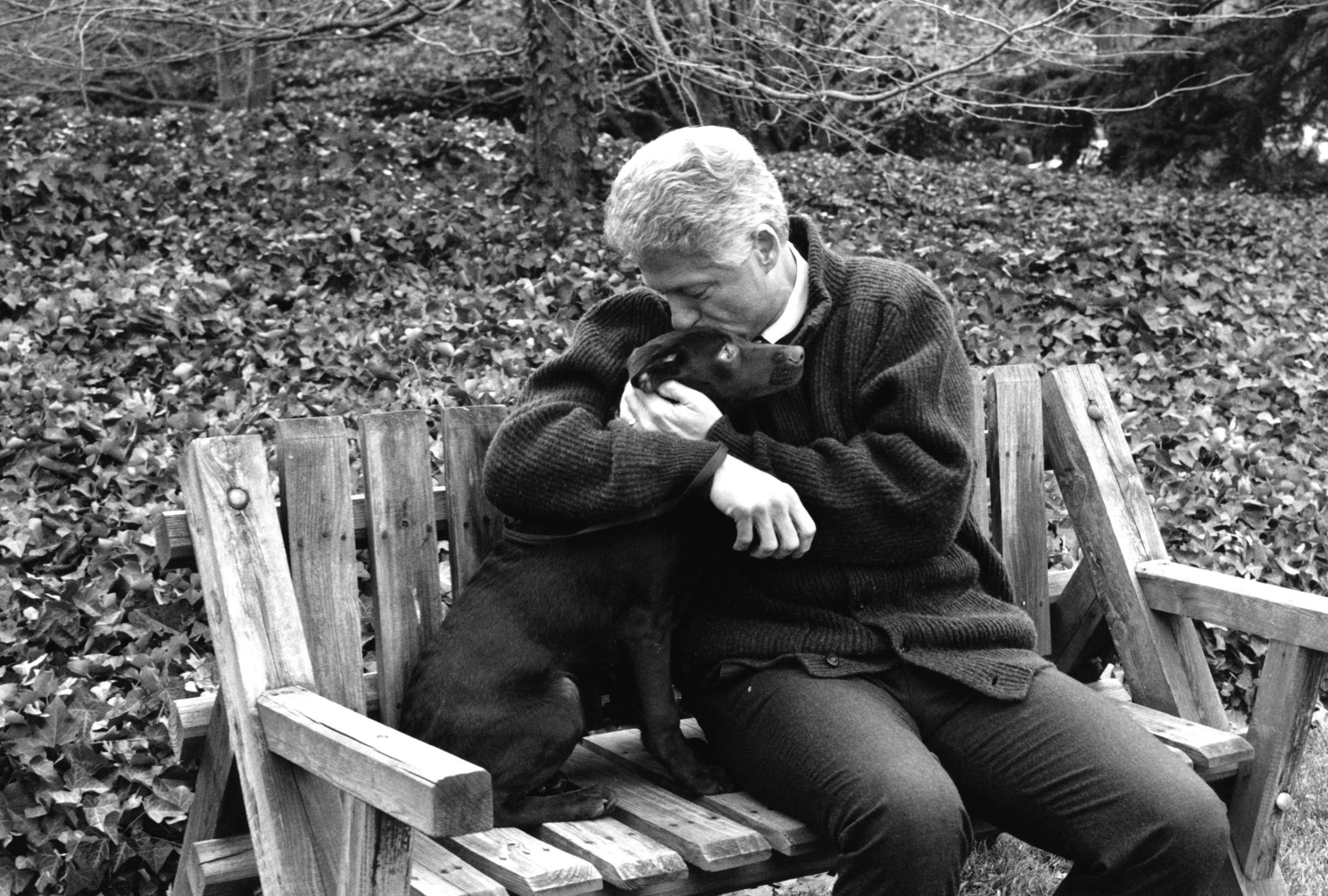
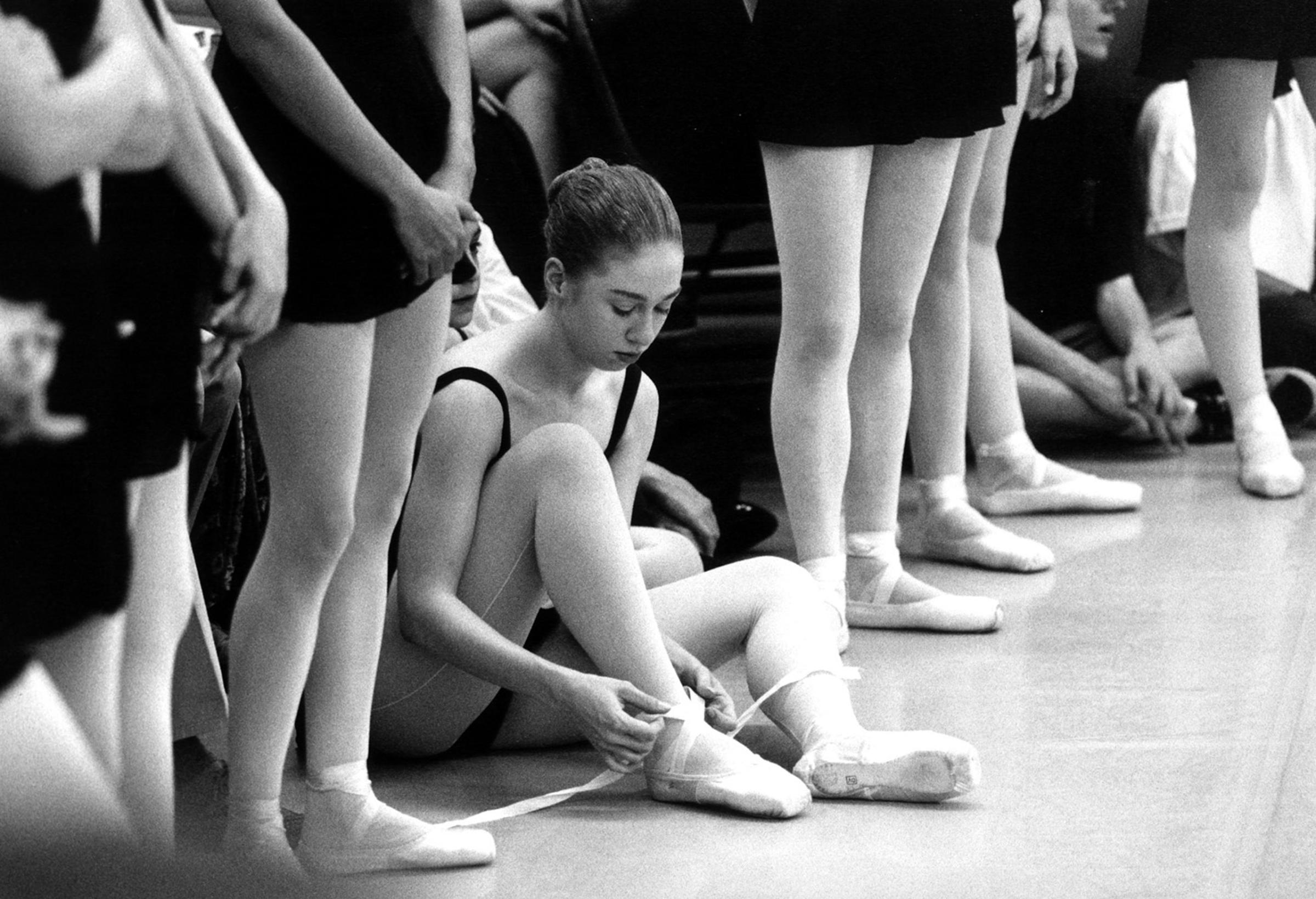

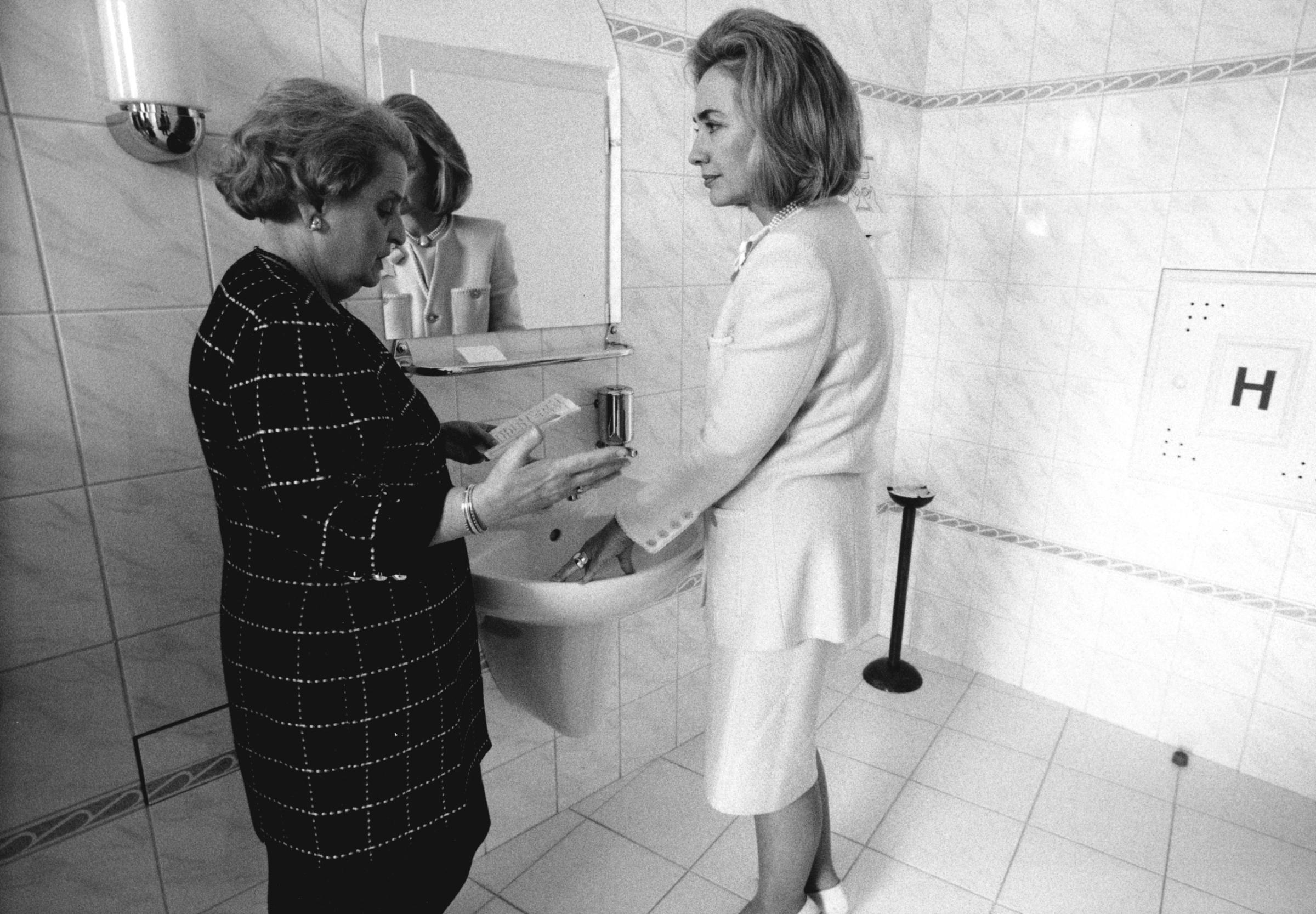
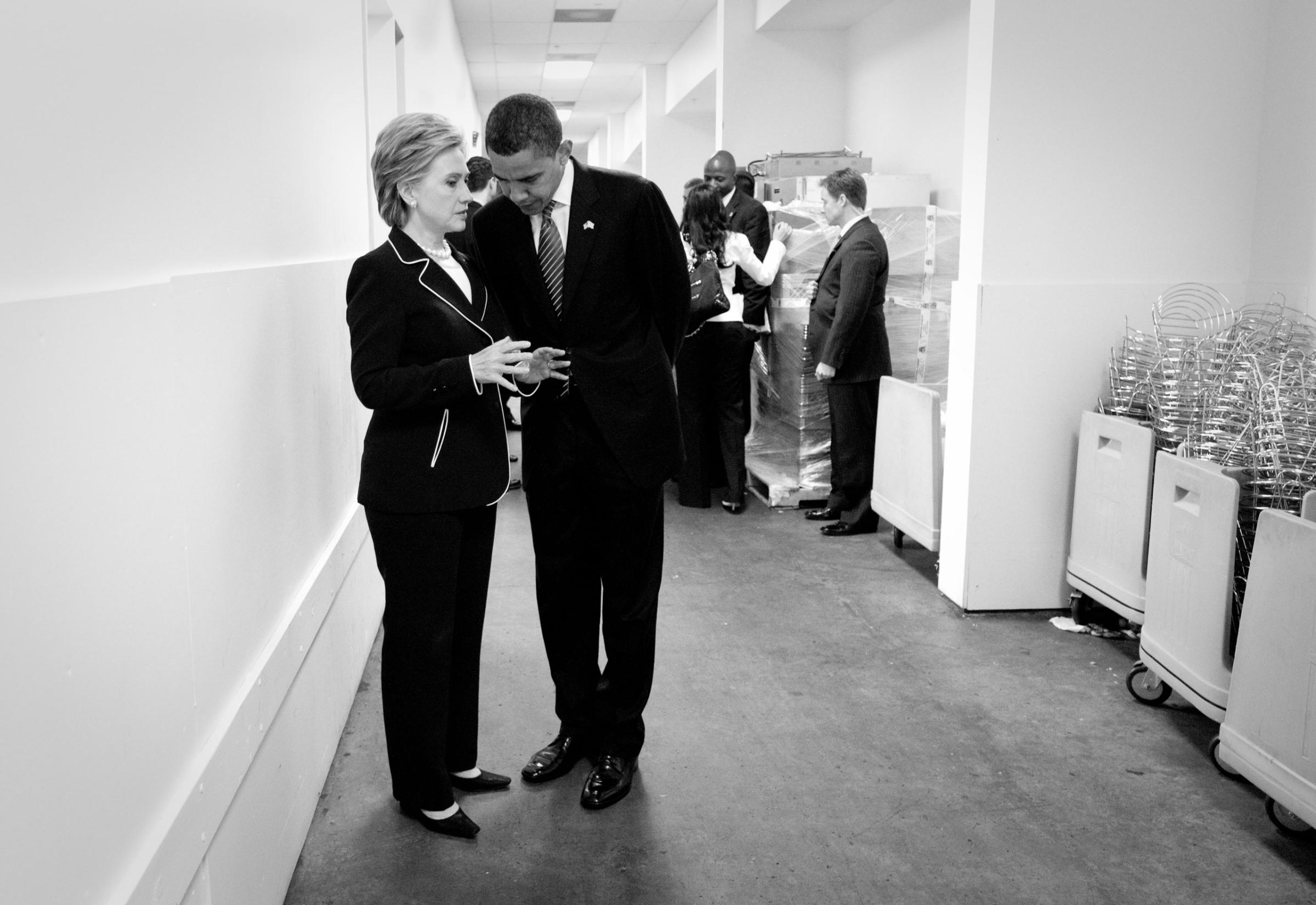
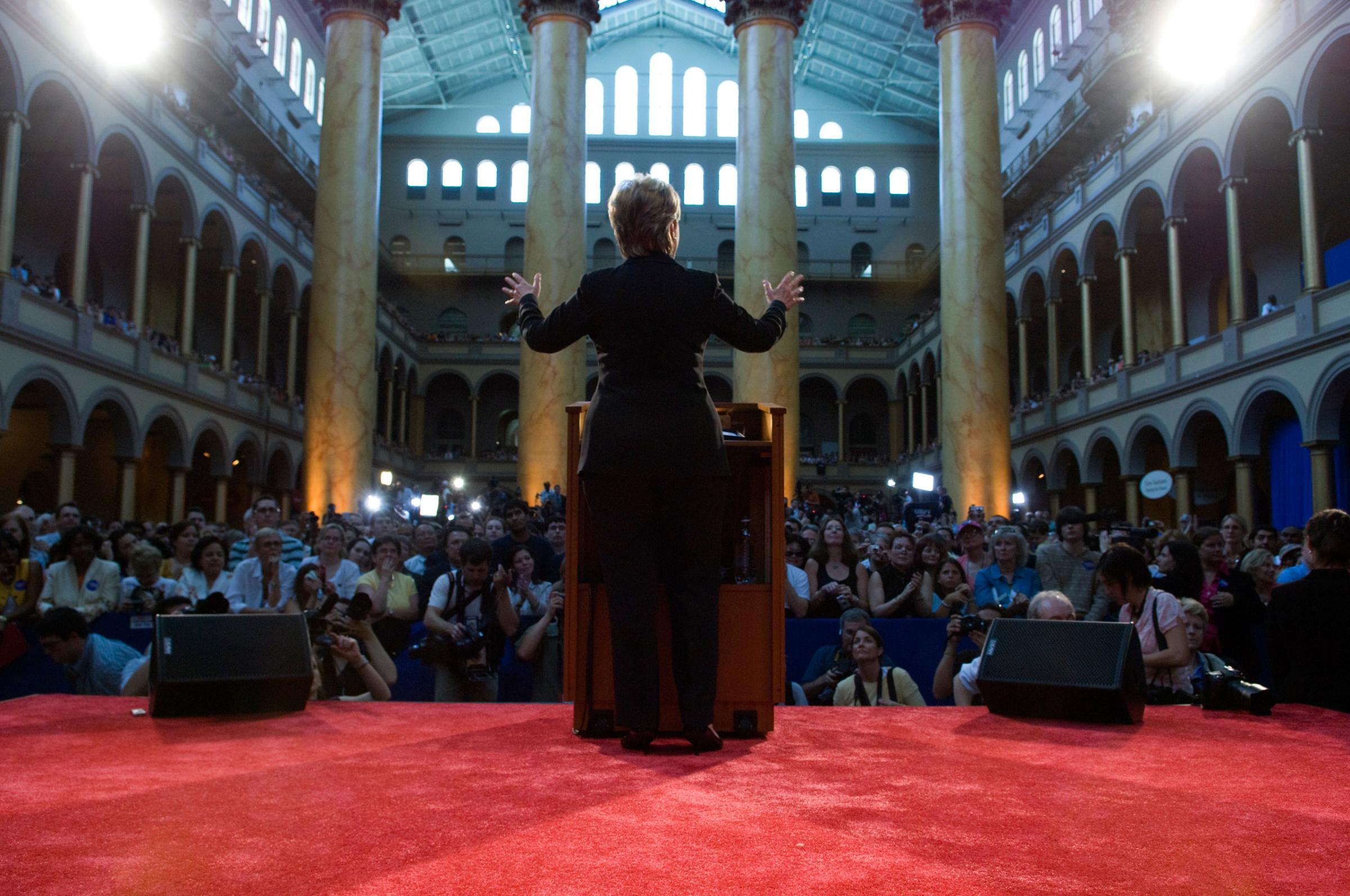
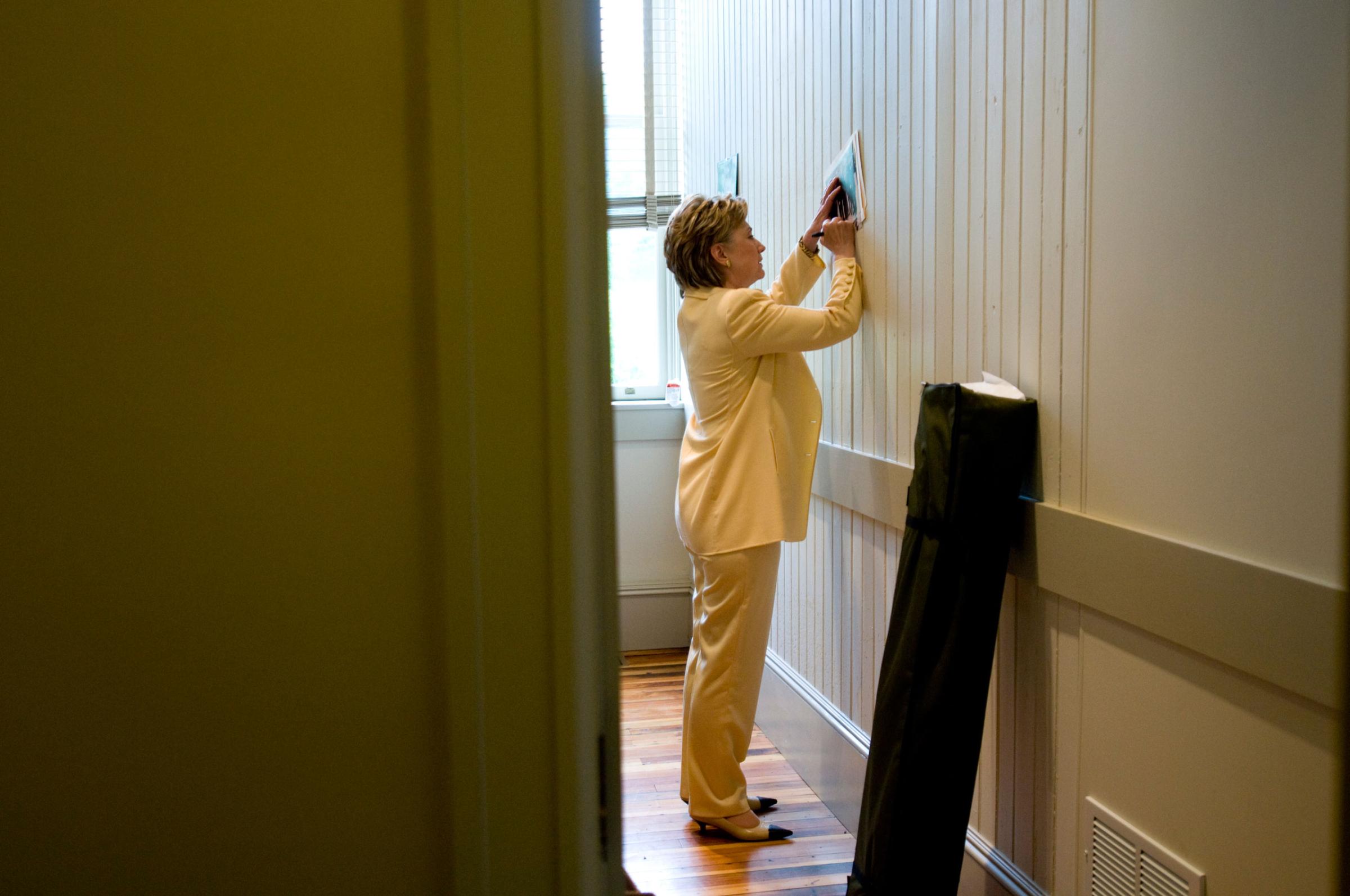



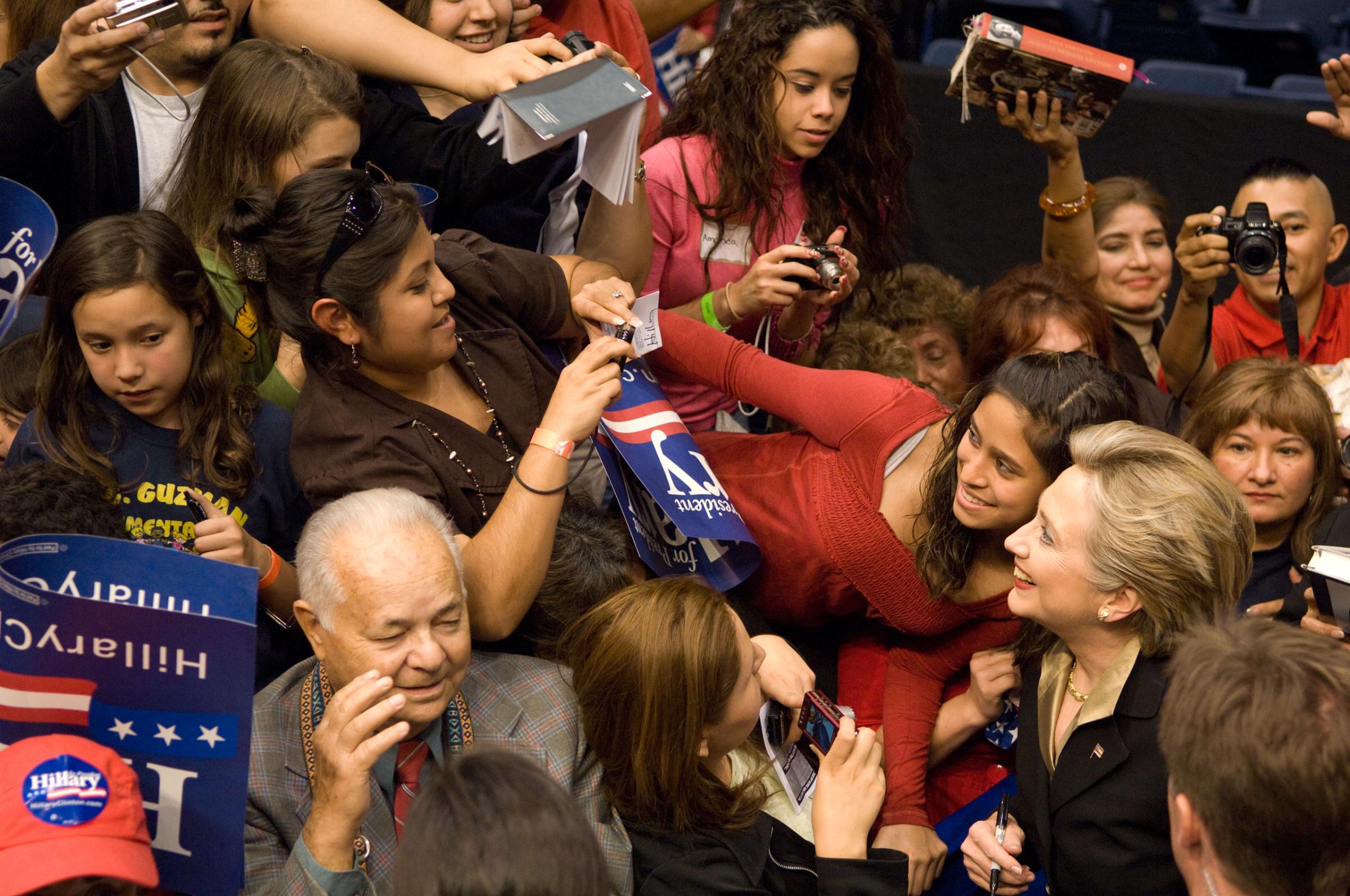
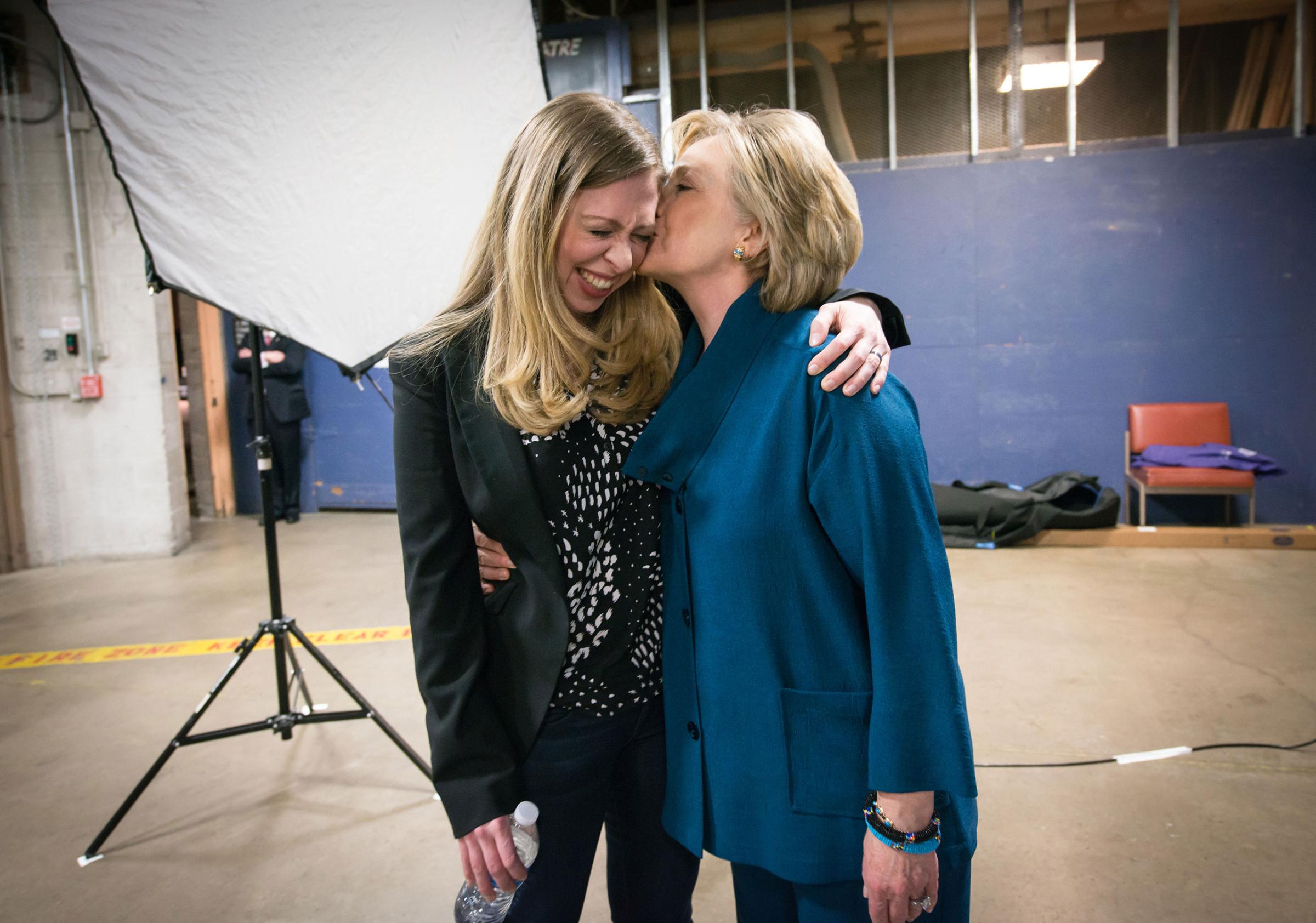
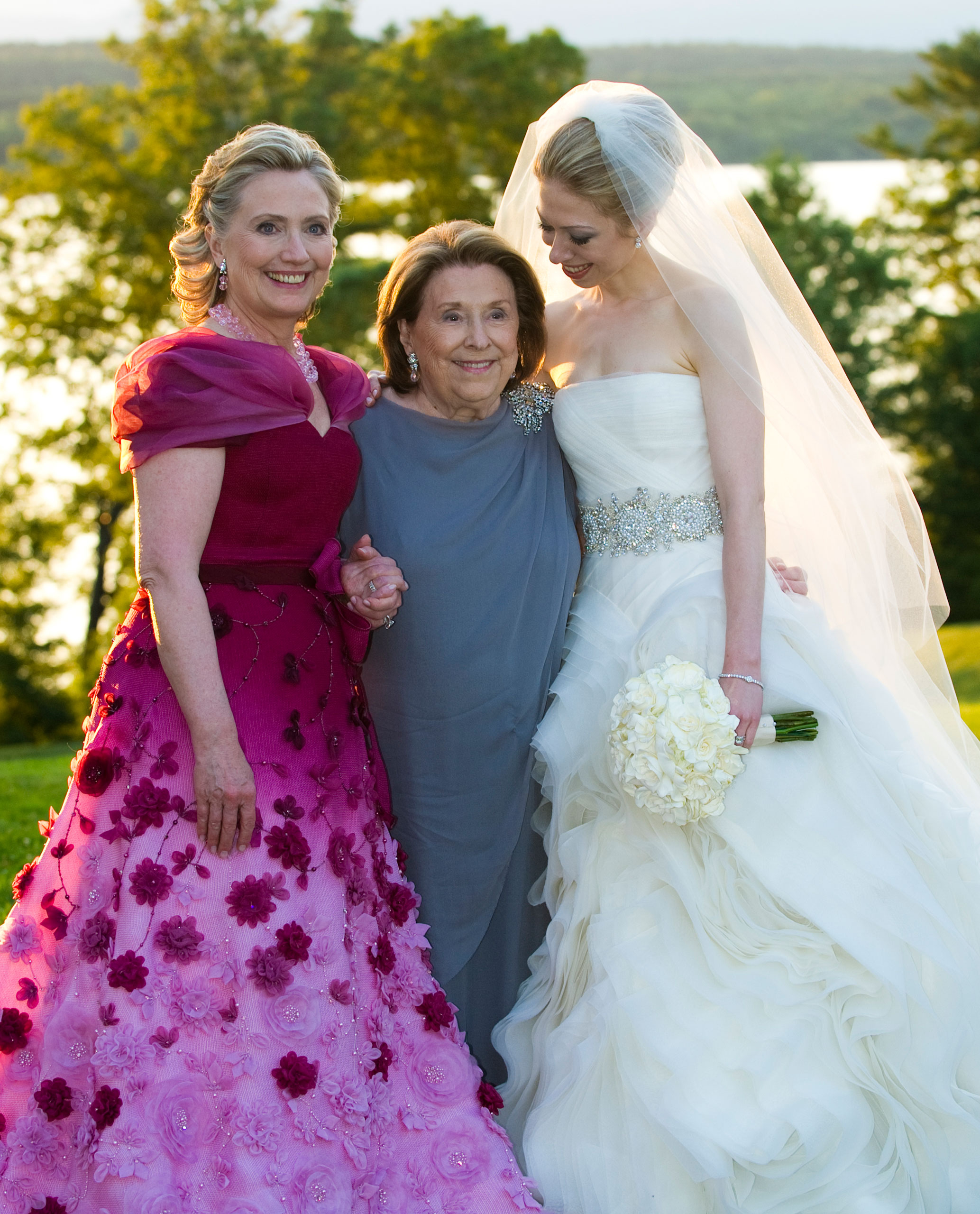
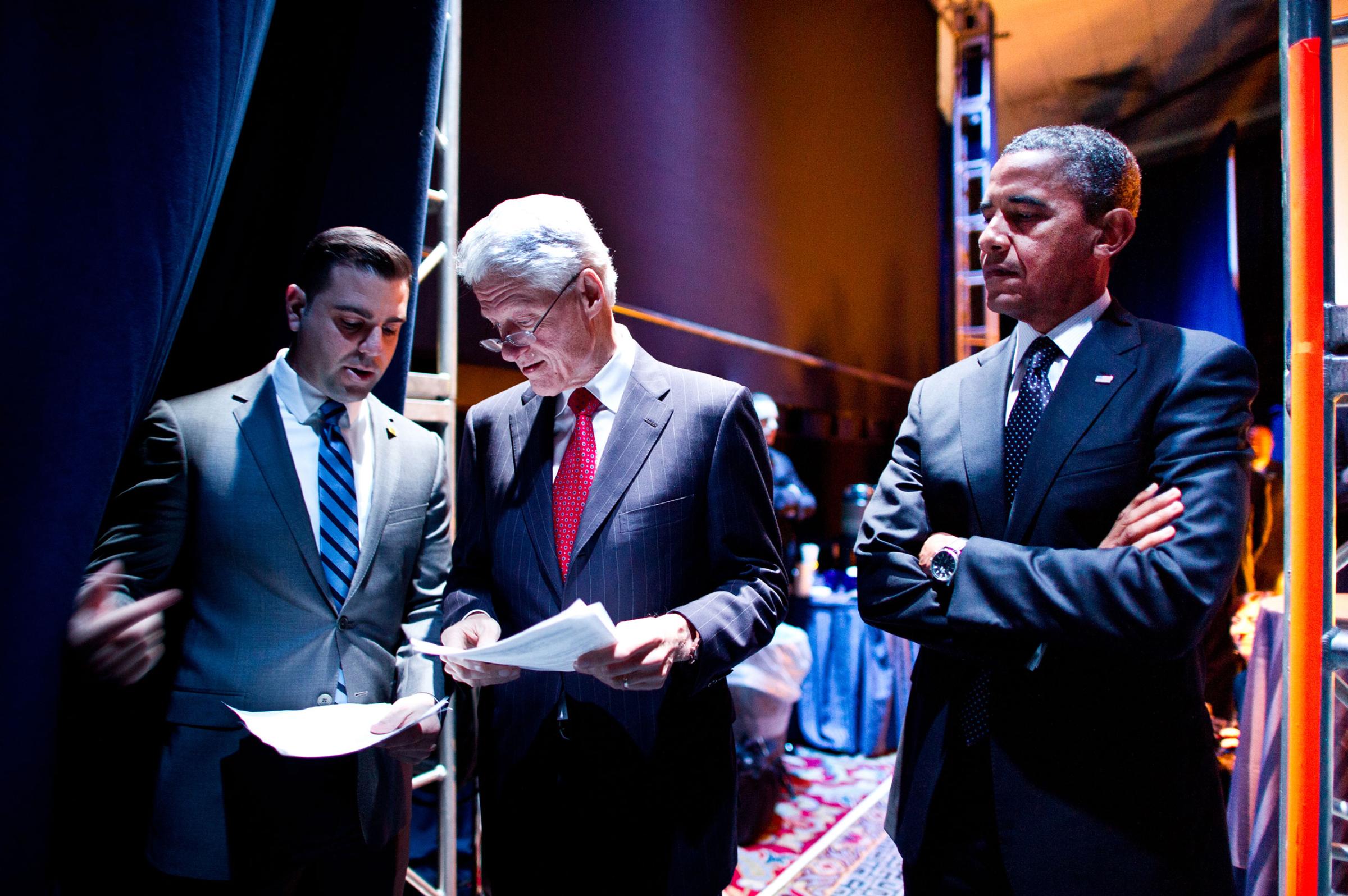
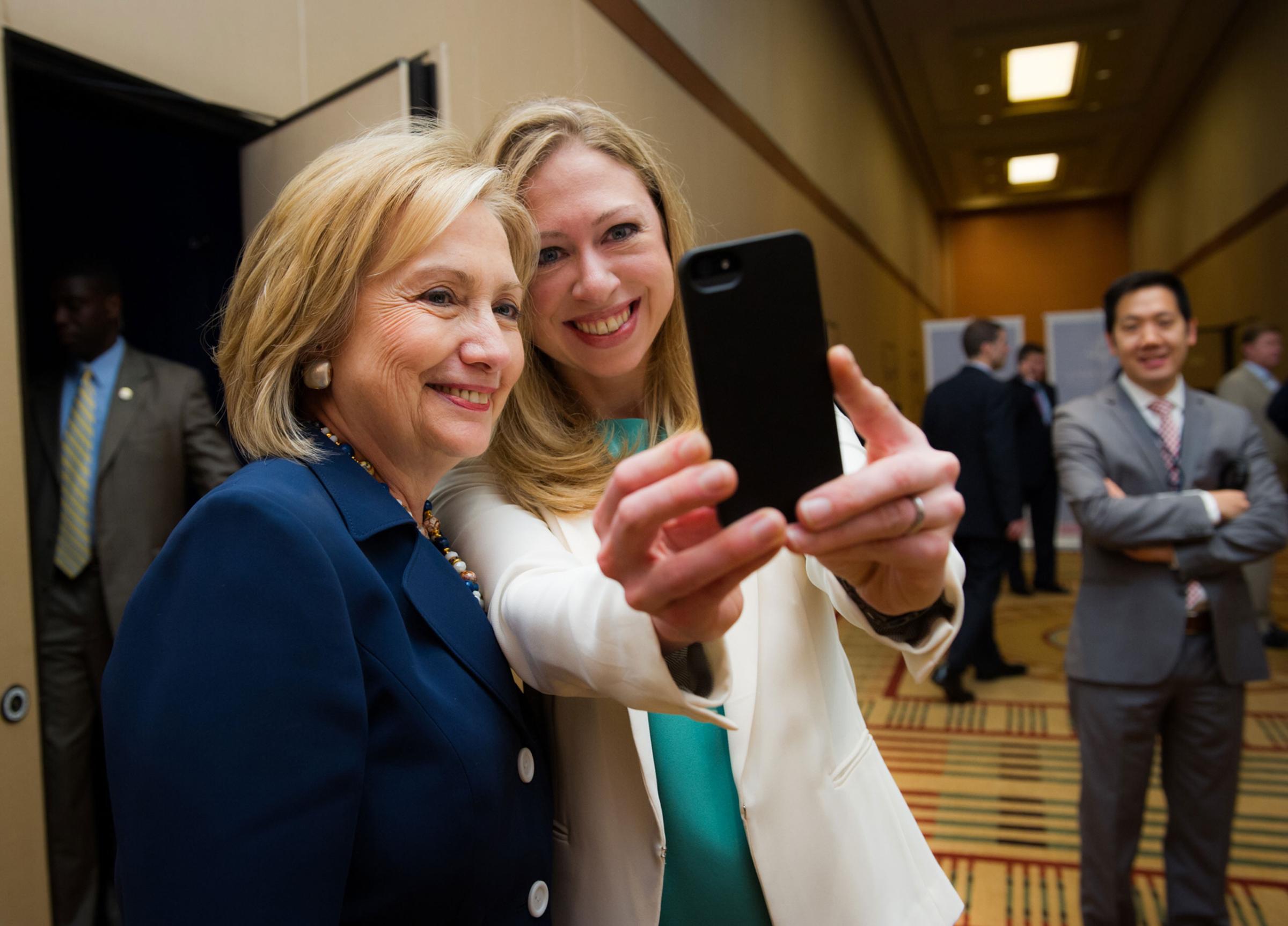
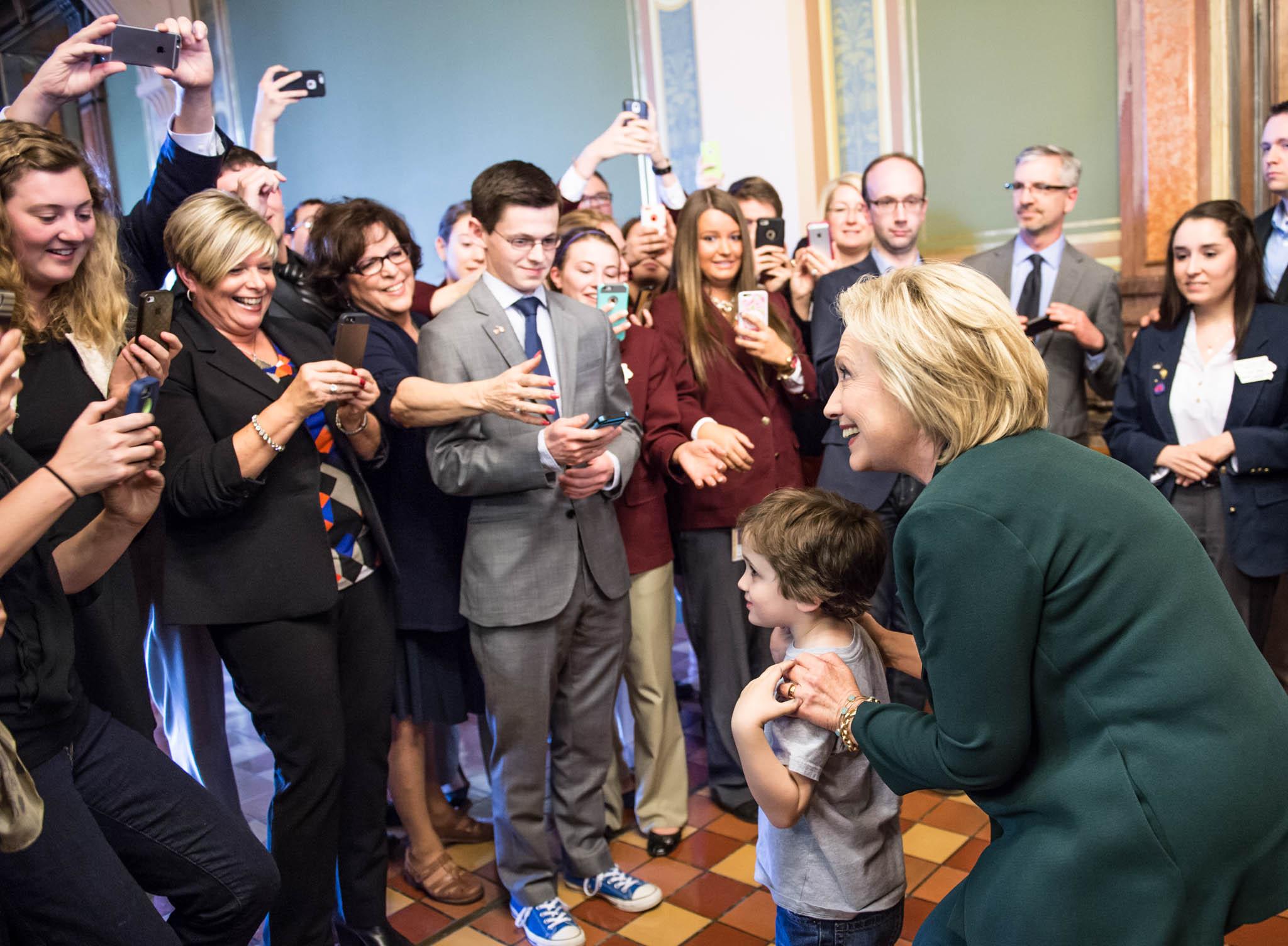

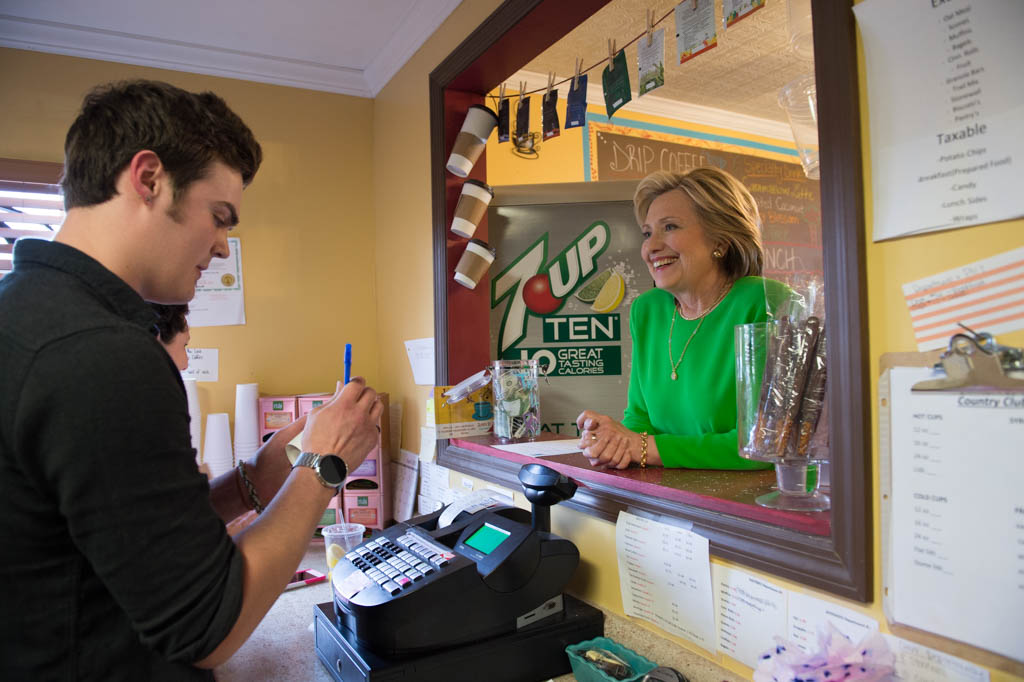
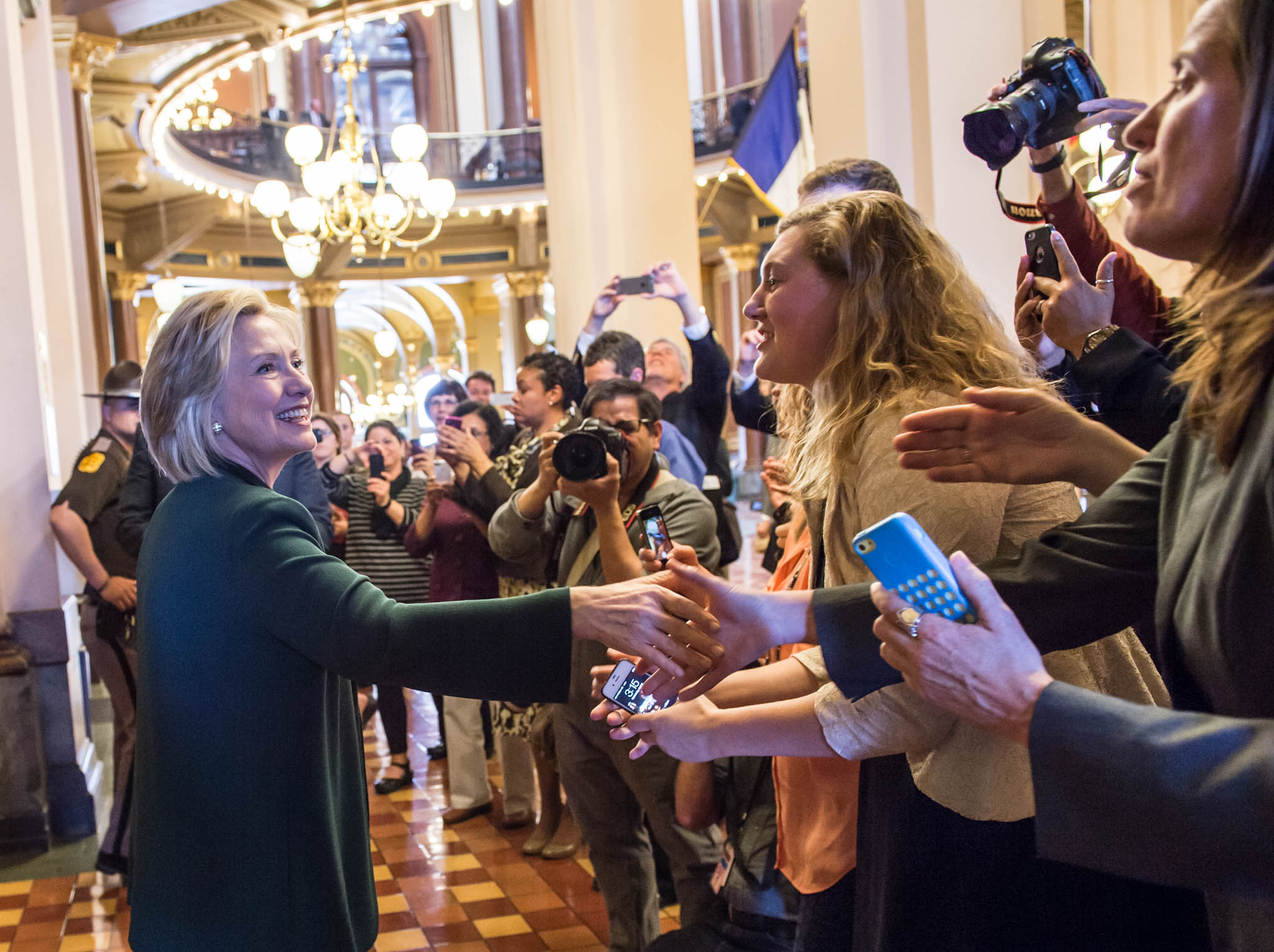
More Must-Reads from TIME
- Inside Elon Musk’s War on Washington
- Why Do More Young Adults Have Cancer?
- Colman Domingo Leads With Radical Love
- 11 New Books to Read in February
- How to Get Better at Doing Things Alone
- Cecily Strong on Goober the Clown
- Column: The Rise of America’s Broligarchy
- Introducing the 2025 Closers
Contact us at letters@time.com